Organization - Groups
Groups within an organization refer to the collection of individuals who come together to achieve common objectives, teaming up for specific tasks, or share similar roles and responsibilities. Grouping is important for organizing the workforce, streamlining operations, and fostering collaboration.
Employee Groups are sub-groups of employees categorized based on their roles, functions, or other criteria. These groups help in organizing the workforce, assigning responsibilities, and managing resources efficiently.
The groups listed include various roles within the university, with an edit icon next to it, for modifications if necessary.
Add Group
To create a new group,
- Click on
Add Newbutton. - Enter the name of the group; for example, "Editorial."
- Submit.
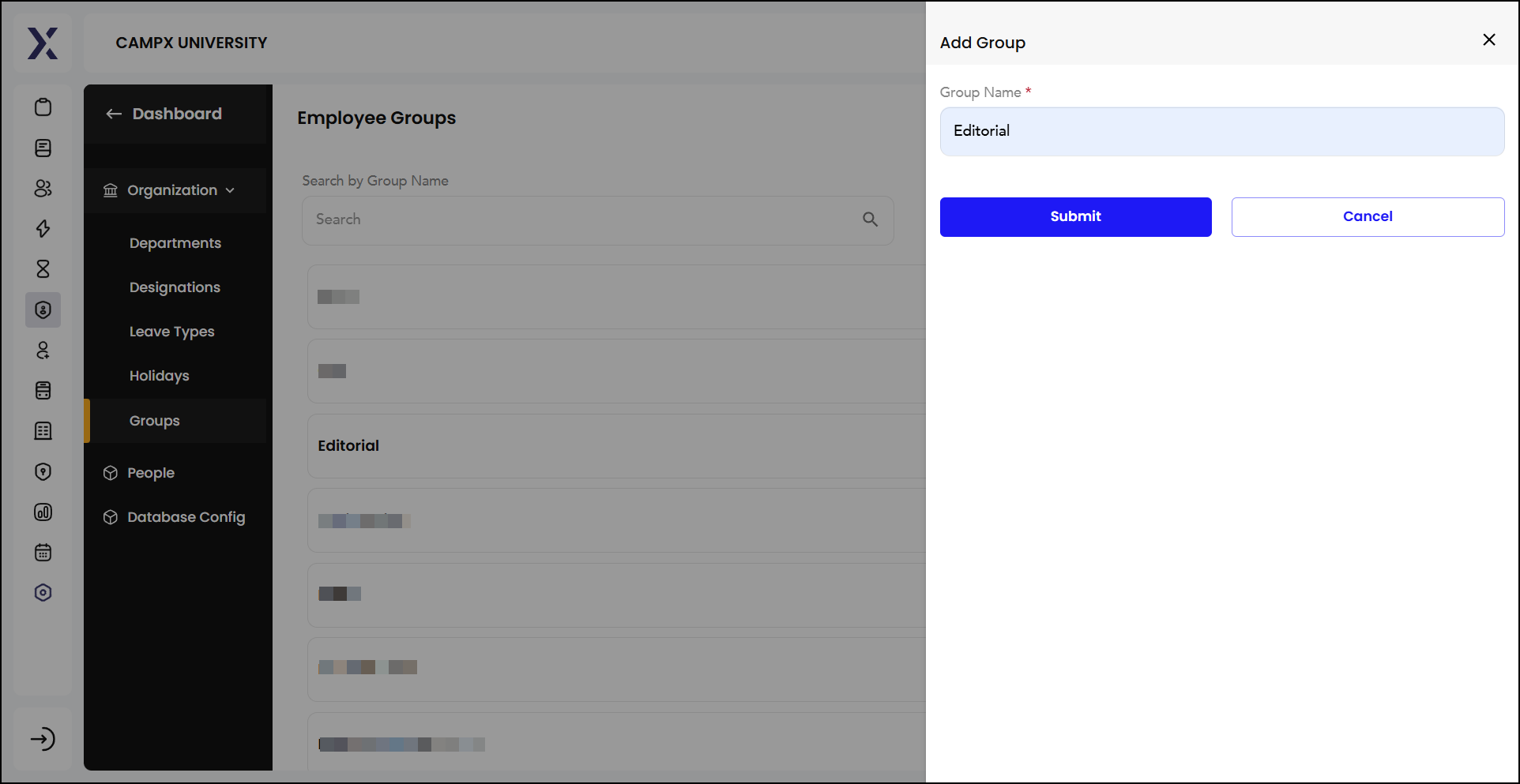
Add More / Edit
Click on corresponding Edit. There, you will find multiple tabs for configuring
- Reporting Manager
- Time
- Weekday
- Holiday
- Time Violation
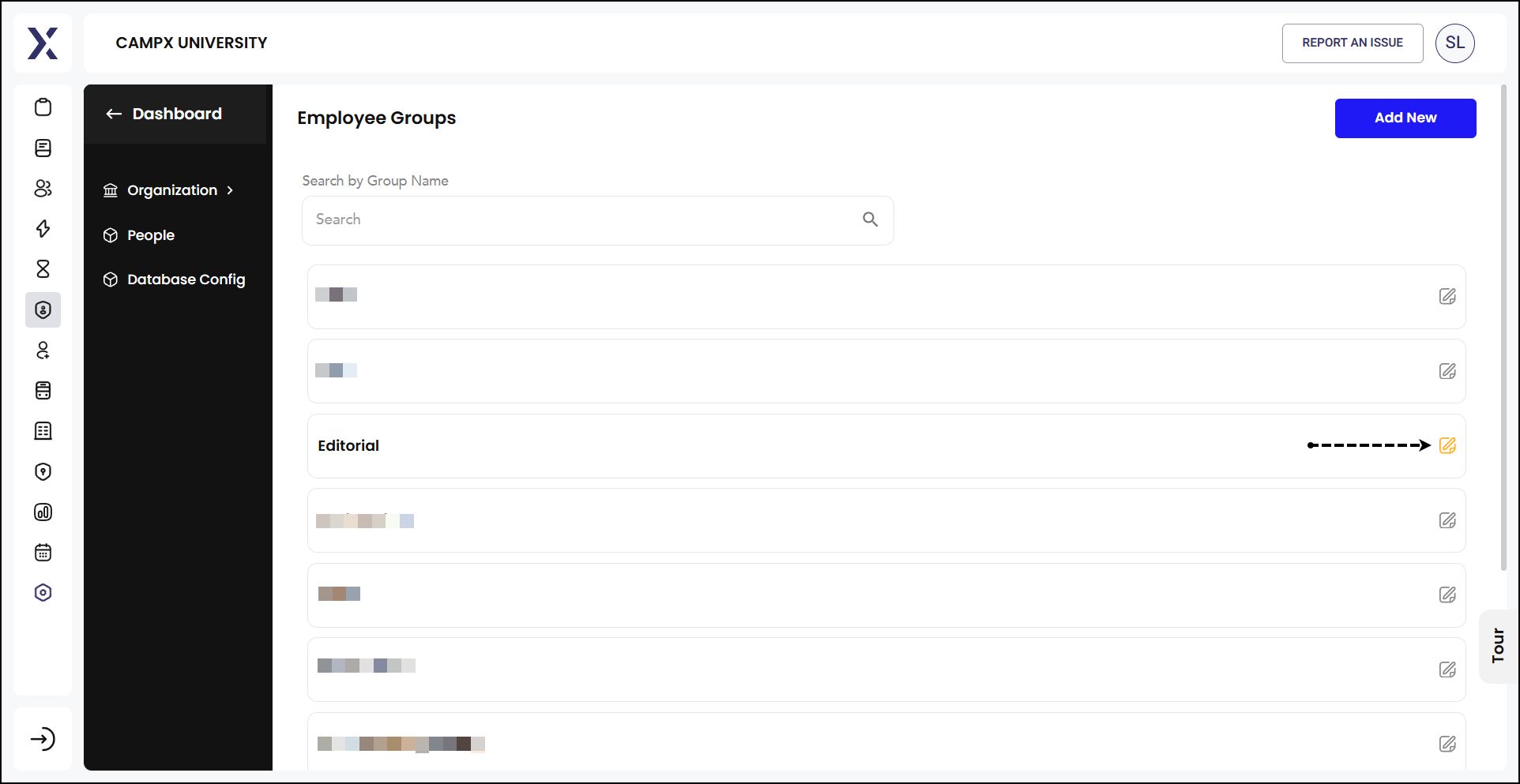
Reporting Manager Configuration
Reporting Manager Configuration will allow you to set the hierarchy within an employee group. Hierarchy defines the chain of command within the group, responsibility clarifies who is responsible for the team members, and organization helps maintain a structured reporting system which is essential for efficiency and clear communication.
Here, you can designate who the reporting managers are for a specific group and assign them a precedence order.
- Click 'Add.'
- Select Reporting Manager from the list.
- Set order of precedence; "1" means the primary RM and "2" means the alternative RM (if primary RM is unavailable).
- Click on 'Submit' button to confirm RM for the employee group.
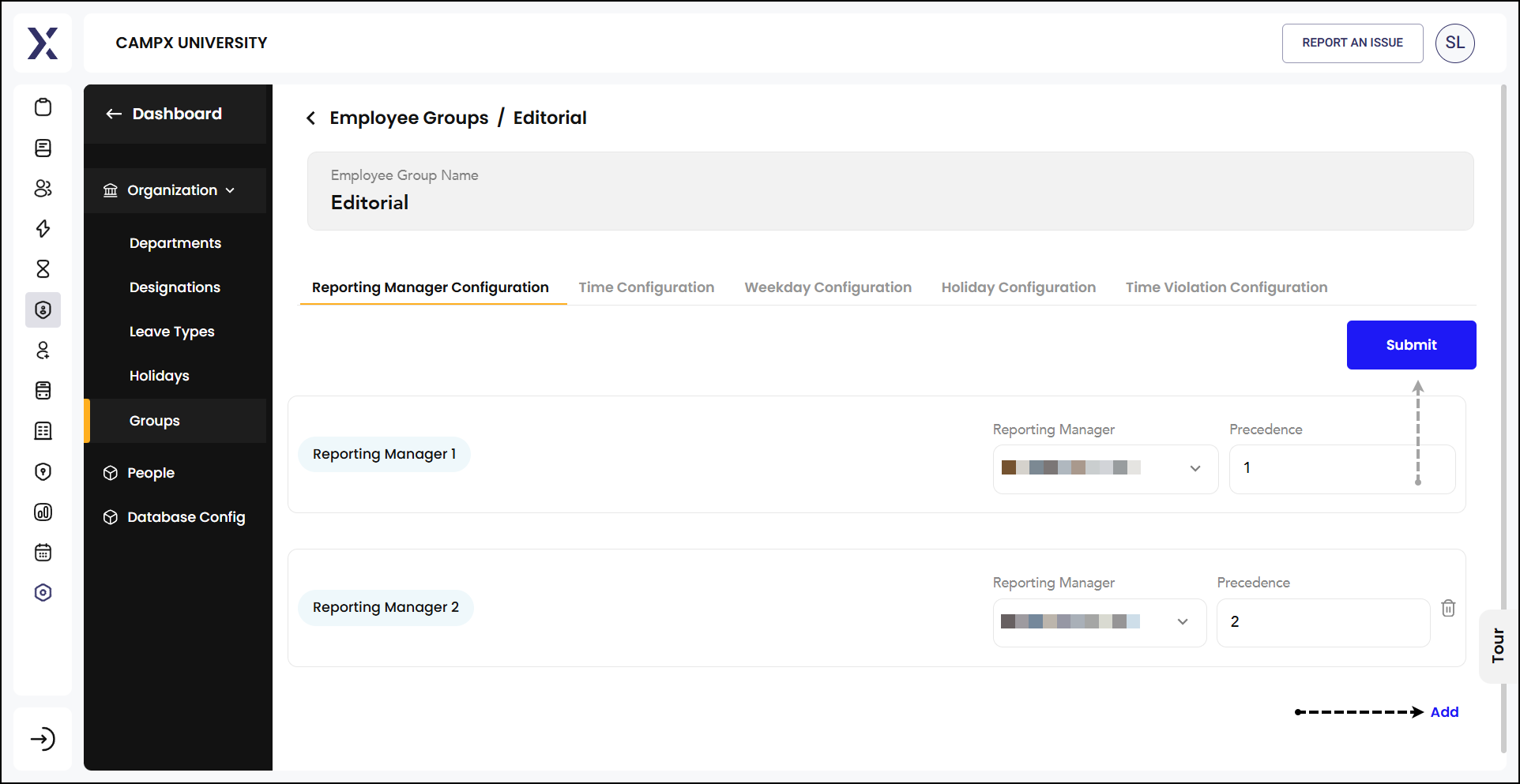
Time Configuration
With Time Configuration, you can manage and customize time-related policies for all members of the organization. Grace period means allowing a buffer period for employees who may arrive or leave slightly outside the designated times. The Minimum Forenoon and Minimum Afternoon Working Hours ensure that employees meet required working hours in the morning and afternoon sessions, to minimize impact.
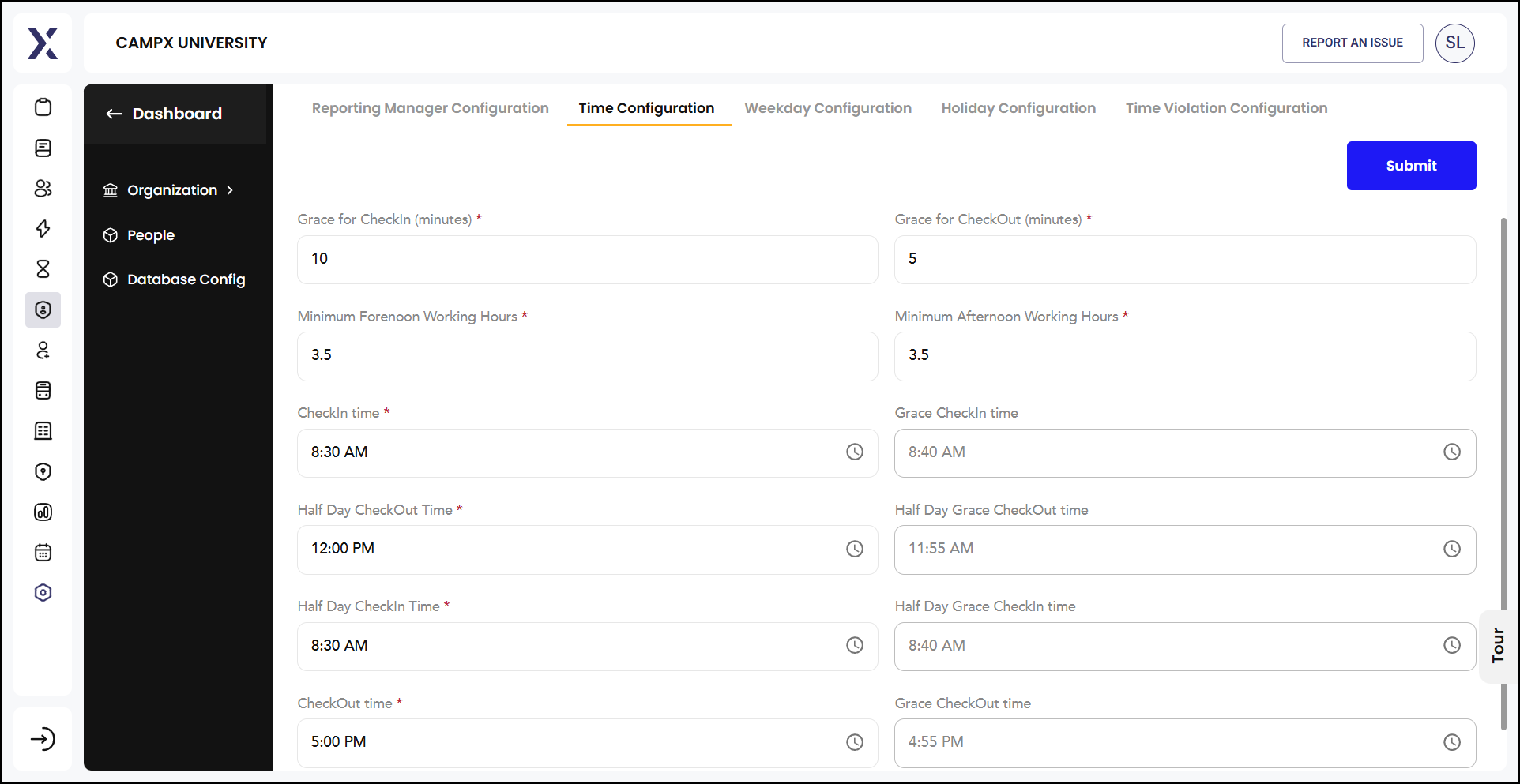
Weekday Configuration
You may set mandatory week-off here, in Weekday Configuration. This will help you manage and customize the work schedule, accurately track attendance based on working days and holidays, ensure payroll calculations take into account the correct working days, as well as schedule meetings/events/shifts.
Each day of the week (Sunday to Saturday) has a toggle switch that allows you to set it as either a "Working Day" or a "Holiday."
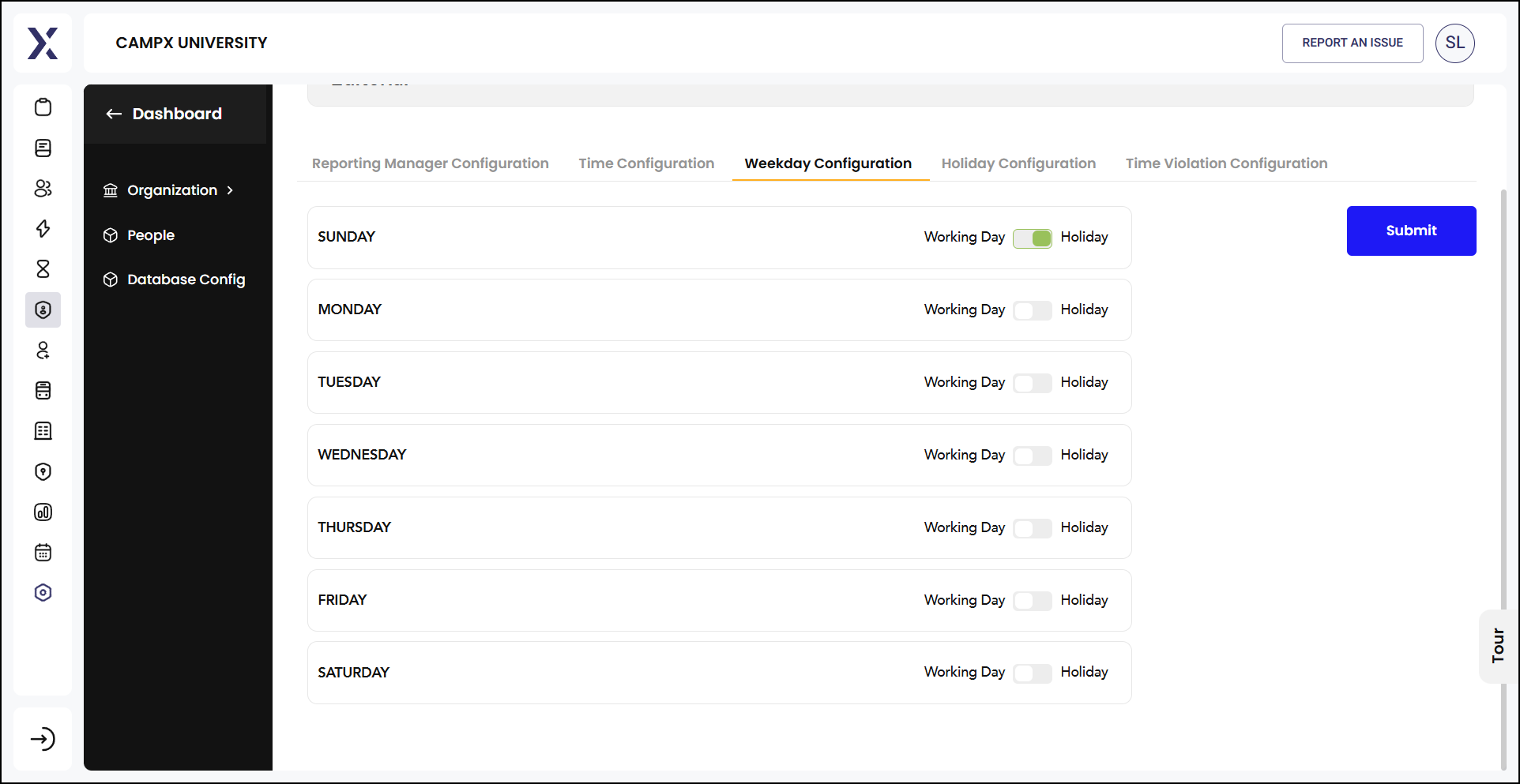
Holiday Configuration
The Holiday Configuration displays a list of holidays for the chosen year.
- Click on
Add Holidays. - Select the holidays you want to bestow for that group, from the list configured under Settings > Organization --> Holidays.
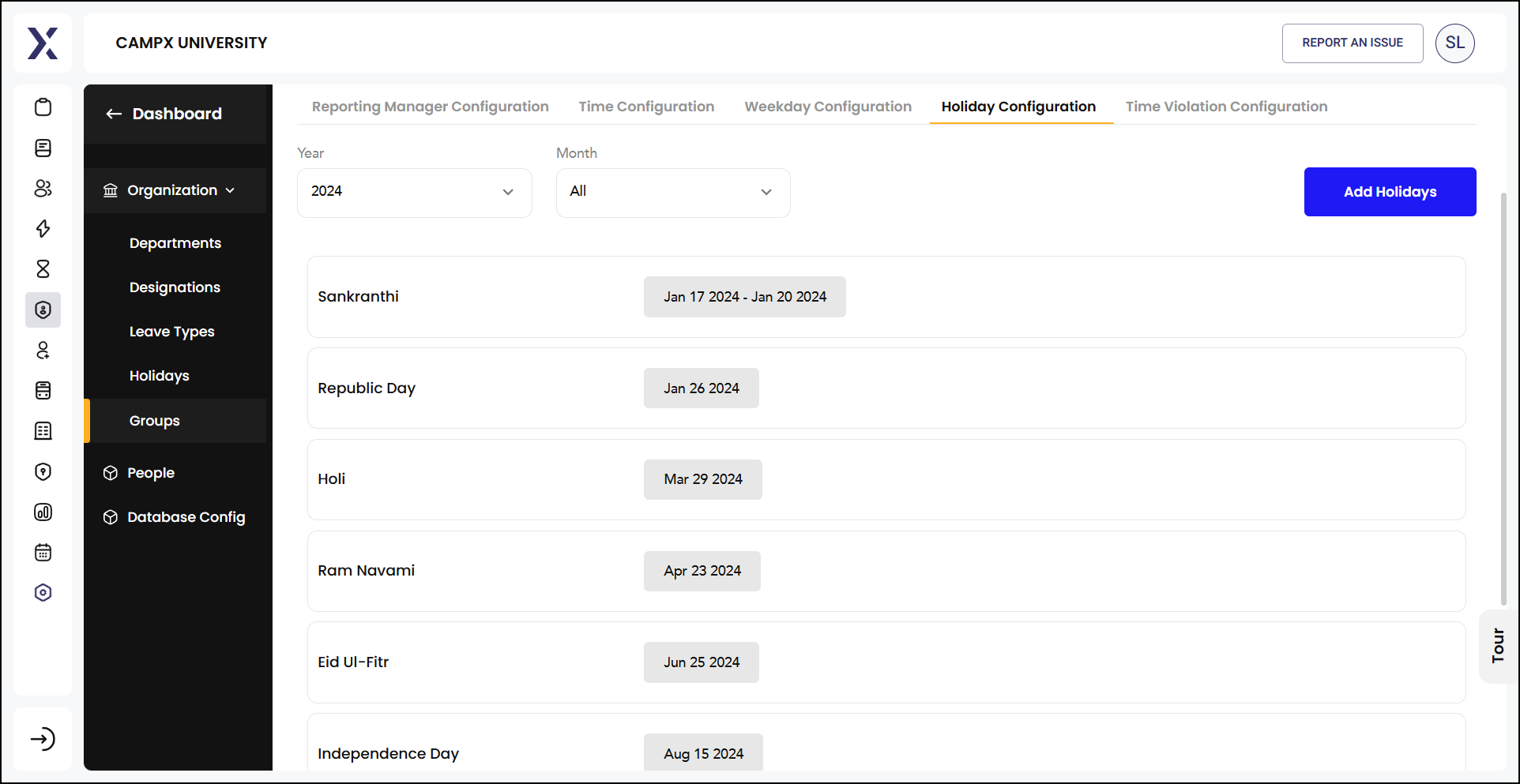
Time Violation Configuration
Time Violation helps in maintaining discipline and punctuality within the group by linking time violations with leave deductions. Employees should be encouraged to adhere to the set check-in and check-out times to avoid unnecessary deductions from their leave balance, ensuring smooth operations and a productive work environment.
- Click 'Add New.'
- The "Enable Leave Usage For Time Violations" toggle switch allows you to enable or disable the usage of leave for time violations.
- The "No. of Grace Time Violations Per Month" field sets the number of grace time violations allowed per month. Default is 0 (zero).
- Leave Usage Configuration (Example):
- One Leave will be used for every 3 time Violations indicates that for every three time violations, one leave will be deducted.
- Any No of Violations is an option to specify any number of violations and the corresponding leave usage.
- Click on 'Submit' button.
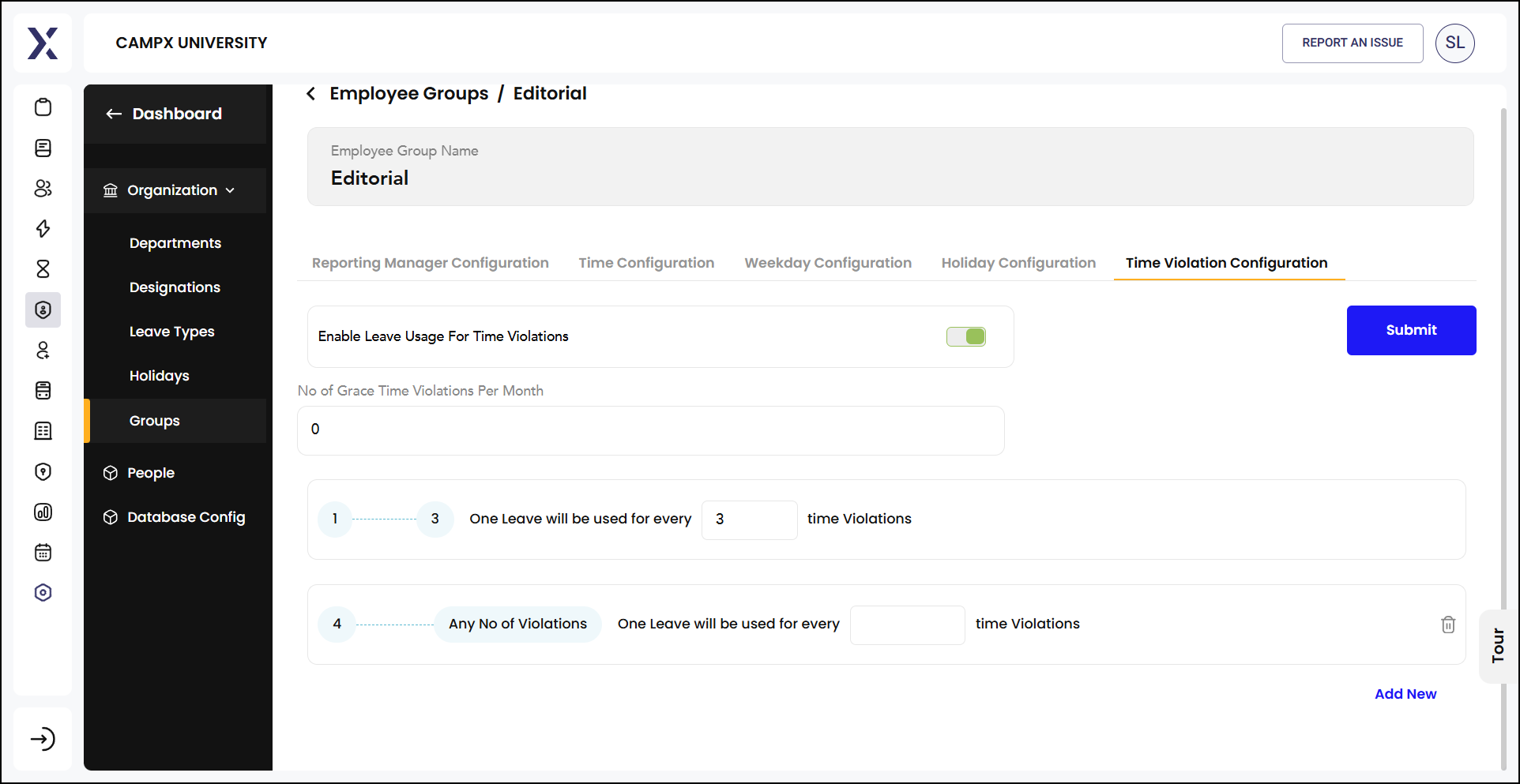
It is vital that the organization's structure is well-defined and that all relevant information is easily accessible and manageable. By defining and managing these components, educational institutions can ensure efficient operations, better resource management, and improved overall performance.